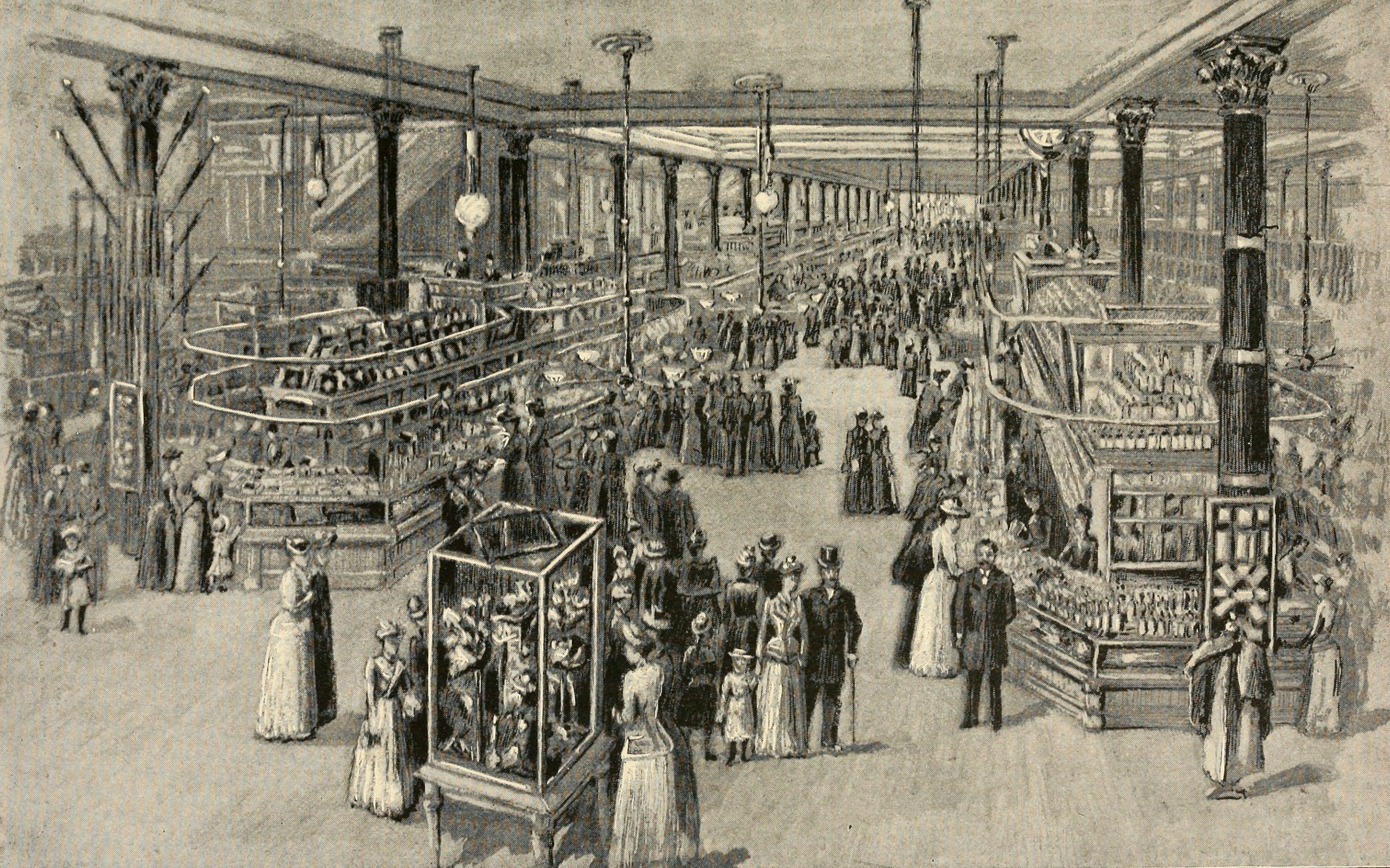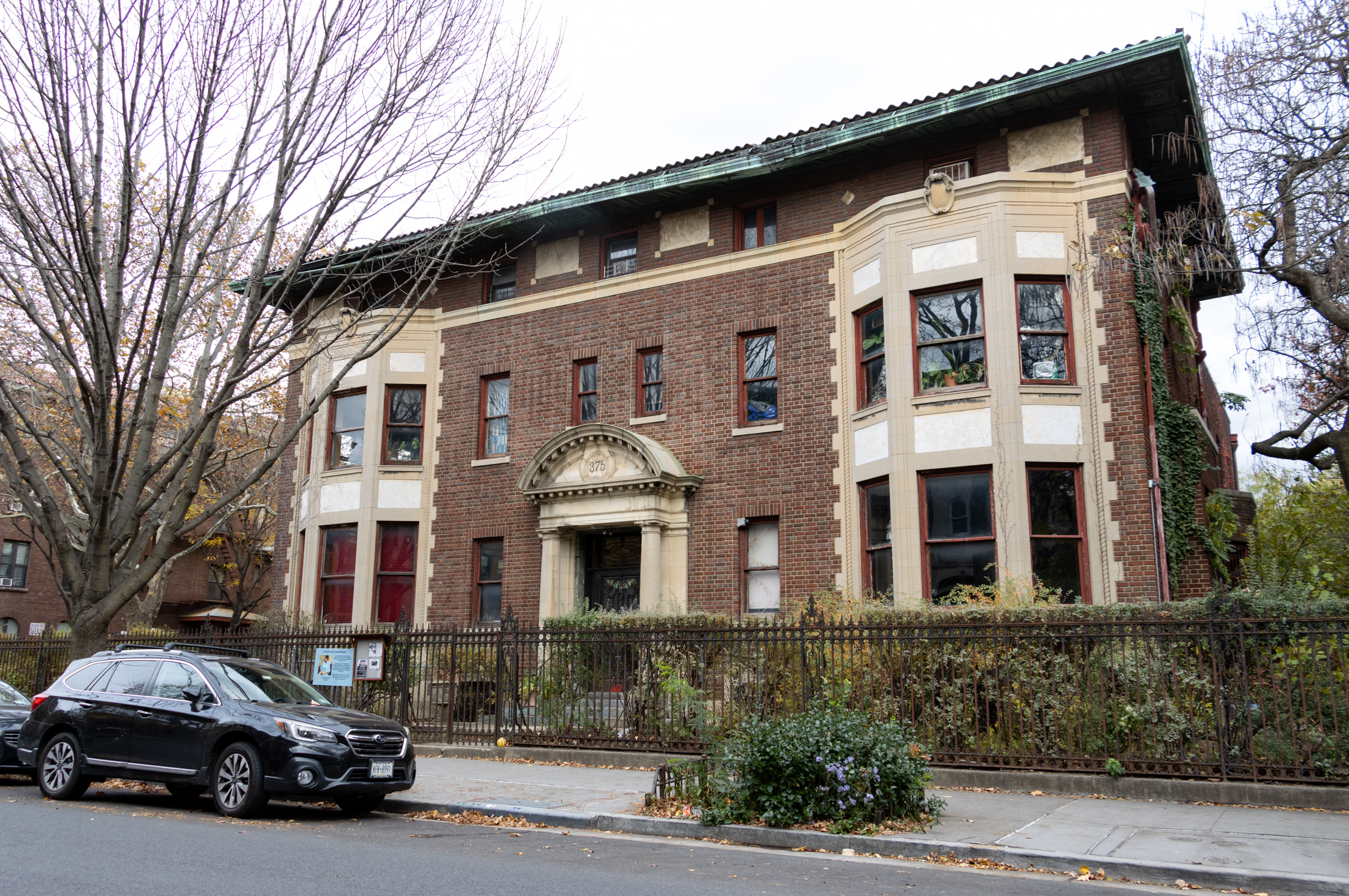DoBro Redevelopment Not So Great for Everyone
Not everybody is profiting off the Downtown Brooklyn boom, according to a recent report. Families United for Racial and Economic Equality (FUREE) and the Urban Justice Center conducted surveys of 61 small businesses in Downtown Brooklyn over the past year and found 35 have since moved or gone under. Many of the closures were attributed…


Not everybody is profiting off the Downtown Brooklyn boom, according to a recent report. Families United for Racial and Economic Equality (FUREE) and the Urban Justice Center conducted surveys of 61 small businesses in Downtown Brooklyn over the past year and found 35 have since moved or gone under. Many of the closures were attributed to four large projects &mdash City Point, Al Laboz’s planned Willoughby West tower, Stahl Real Estate’s 50-story office tower, and the planned Willoughby Square Park &mdash and the decrease in daytime business as office towers were emptied for residential development. Three-quarters of the owners surveyed are immigrants, 64 percent non-white, and 23 percent women.
The report, “Out of Business,” points out that Fulton Mall was already one of the city’s most successful retail corridors with 100,000 daily shoppers and $100 million in annual sales. In fact, a prominent local broker explained to us that Fulton Mall’s retail space is so lucrative that landlords actually removed stairwells and elevators in many of the buildings to create more ground-floor space, which now rents at between $150 and $300 per square foot (we were wondering why all the unsightly boarded-up windows). He said residential and low-end office tenants who would have rented out the upper levels were more troublesome and less lucrative, so landlords simply boarded up the windows and stopped maintaining those floors. FUREE co-director Ilana Berger suggested landlords re-open that less expensive space to small business owners, many who had already been paying prime ground-floor rates, as one way to maintain Fulton Mall’s diversity. But she acknowledged that after decades of neglect, renovation would be costly. Berger said she also tried to meet with the City Point developers to help secure space for displaced and aspiring small businesses owners in the tower’s 500,000 square feet of planned retail, but was met with disinterest. Click through for stories on some of the businesses profiled in the report, and the Downtown Brooklyn Partnership’s response…
Alas, the report alludes, the new residents and office tenants the city hopes to attract don’t generally shop at the same book and apparel stores; they don’t get their hair and nails done at the same places; and they want a different crop of restaurants. And the landlords (only five of the entrepreneurs surveyed owned their store or building) want to cash in on the lucrative 2004 Downtown Brooklyn re-zoning, but in order to build towers, the existing business owners had to be kicked out. But will they be invited back?
Joe Chan, president of the Downtown Brooklyn Partnership, a public-private agency, responded with a statement: “Downtown Brooklyn is one of the fastest growing urban centers in America. The redevelopment activity in the area brings with it jobs and a permanently enhanced local economy. The Downtown Brooklyn Partnership with its BID partners work to connect small business owners with available resources and appropriate service providers.”
According to the report, many small business owners weren’t offered this assistance. Berger said the city could create a Business Relocation Assistance Corporation for Downtown Brooklyn like they have in Williamsburg-Greenpoint and other parts of the city. Displaced small businesses are provided grants that help with relocation costs such as moving heavy equipment; hiring lawyers, architects and contractors; and other costs associated with signing a new lease. Otherwise, relocation assistance is on the onus of landlords, isn’t always honored, and often involves lawyers. Here are a few businesses profiled:
- Gallery Religious Supplies owner Maisha Morales bought the business around 2001 when it was still at Albee Square Mall, and increased its daily earnings from $100 to $2,500 by 2006, according to the report. In in effort to sign a 20-year lease under previous owner Thor Equities, she spent $15,000 on lawyers, architects and contractors, then was served a nine-day eviction notice when rights to develop the building were awarded to the new owners, MacFarlane Partners and Acadia Realty Trust. She had to spend $85,000 to move and now pays three times her former rent for space on Willoughby Street.
- A & B Books owner Eric Gift, at one time the largest distributor of African American literature in the country with three stores in the Downtown Brooklyn area, may have to close his last location on Duffield Street, in the footprint of the planned Willoughby Square Park, if the city moves forward with seizing the property via eminent domain. The Lawrence Street and Atlantic Avenue locations closed down due to lack of business because of ongoing construction and changing demographics, according to the report. They first opened in 1989.
- Lawrence Street Wigs and Hats owners Joyce and Jee Kiehm ran a thriving business since 1986 by making customized wigs. They were forced out of 141 Lawrence Street because the new owner of their building, Stahl Real Estate, wants to build a 50-story tower, according to the report.
- Bagel Guys, at 102 Willoughby across from MetroTech, ran a thriving business until the Verizon building was sold and many Chase workers were relocated to New Jersey, but stuck around hoping the new BellTel residents would boost business again, according to the report. Despite being on a month-to-month lease since 2005, owner Jeff Garguilo bought out his partners with the understanding that his business would be safe for at least the next five years, then was served with a 60-day eviction notice once his landlord decided to redevelop the property. He is unemployed and unable to find affordable space within the vicinity, but is still looking.
The questions of the day are: What responsibility does the city have to ensure that these small business owners don’t fall into financial ruin in the process? And is there going to be a higher demand for the new businesses coming in than the ones already there, considering what’s available in surrounding retail corridors?
DoBro’s Average Household Income to Double? [Brownstoner]
Massive Bridge Street Tower In The Works? [Brownstoner]
Albee Square Mall Clears Out [Brooklyn Eagle]
Much of Downtown Brooklyn Is Going Out of Business [Brooklyn Eagle]
The study area:






DITTOBURG: Among some people, but I think there is a growing realization that financial institutions have the responsibility to only lend to people who can afford to pay the loans back, and at rates that are fair. Not everybody has the expertise to navigate language in a mortgage or to make the best financial decision, just like not everybody has the expertise to fix the engine in their car, perform a heart transplant, or defend themselves in a divorce. We should be able to trust these people, at least to some extent, which is why more regulation is being put into place on lending practices and the types of financial practices that are legal. Unfortunately, under the Bush Administration, such industries that could be considered commodities (financial, oil, healthcare, insurance … i.e. essential things that everybody needs to have, not blue jeans or saltine crackers) have been less regulated, and they have enjoyed runaway profits since people have no choice but to pay the price (can only charge so much for blue jeans before most people stop buying them, but the price ceiling can go a lot higher for things like gasoline and mortgages). Since such a huge chunck of our GDP has gone to these industries at the expense of other industries vital to a diversified economy, which provides the greatest number of jobs, the whole economy is suffering based on these poor decisions. If a lower percentage of our income, or the income of corporations, were spent on various types of insurance, energy, and financial interest and fees, then we would have more money to support other sectors of the economy, and fewer companies would jump ship in search of cheaper operating costs overseas.
Recent press reports have also found that financial employees from the top down knew that what they were doing would cause disasterous affects in the long run, yet continued making irresponsible transactions to get the immediate profit. That’s what I was saying about money having a crazy (craven) effect on people. In terms of development, these people on the board of the BIDs and the Downtown Brooklyn Partnership stand to make loads of money from the decisions they are making. Are they going to give that up to help out a wig shop? But their decisions are enabled by public policy and public funds, so from a policy perspective, we have the responsibility to consider what is going to be best for the city’s economy in the long run and what is going to benefit the greatest number of taxpayers. The answer is not always as simple as ask the person wearing the nicest suit because obviously they are the most financially successful and know best, as we have so unfortunately discovered in other economic realms. Sometimes the best approach is to ask everybody who holds a society together, and then to weigh the answers in an effort to please the most people and maximize the revenue coming into the city.
Also, we need to question the prudence of tearing down a vital sector of the economy in the hopes of keeping one that is trying its hardest to leave. Oftentimes, as is the case with former MetroTech tenants, they leave after a few years anyway, naturally, when they are offered a better bribe from a place like New Jersey, and then sublease their space to a company that was already going to stay or has to stay, like government agencies. Shouldn’t we at least try to keep the vital economy here in the meantime? It’s kind of like quitting a job before you get a new one, what’s being done in Downtown Brooklyn. Huge gamble.
One more thing about small businesses being crowded out. Read the attached article about my favorite eatery during lunch time. They have an excellent product, which I can attest to personally, and have now found a new and better home with the help of MetroTech BID.
http://www.brooklyneagle.com/categories/category.php?category_id=6&id=21230
Giselle, makes excellent sense. For thriving businesses, the city should help them relocate if staying in the same location is impossible. Heaven knows, my life would be severely impacted without Tio Pio’s delicious latin food.
A win/win situation is best for the storeowners and best for Brooklyn.
Denton – I think A&S’s building is owned by the daughter of the original owner, but the guys who currently own the business aren’t related to her. They bought the biz from the original owner, who then died and left the building to the daughter. Or at least that’s what the Daily News article said.
My point about A&S is that it’s a small, family-operated business that is unique and provides a valued product to people in the neighborhood. The same is true of many of the stores in downtown Brooklyn. And yes, I do advocate creating subsidies as well as incentives to keep such places in business, since they contribute to vibrant street life and sense of community. Whether it’s talking over the counter in A&S about how to best cook their sausages, or chatting with the woman who’s been making your wigs for the last 10 years, these kinds of personal interactions will soon be vestiges of a time gone by when shop owners knew their customers and weren’t just bland corporate suits. And I’ll repeat – the city gives HUGE subsidies in the form of tax breaks to major corporations to entice them here and make them stay, and they should do the same for smaller businesses, which also have a role to play in our city.
Even though your tag refers to you as bxgirl, I’ll assume you are from Downtown Brooklyn. I, too, have lived here 26 years and I love Brooklyn to death. Not an outsider.
Brownstoner began this discussion referring to City Point, Willoughby Square Park, and Willoughby West. This area was truly a wasteland before this redevelopment began. I ask you again to go to google and type in 150 Myrtle and check it out.
I love the Fulton Mall and I truly believe that there is a tremendous market for many of the goods that are sold at that location. Of course, there is a possibility that market conditions will dictate higher rents for that area thereby pricing out certain businesses. If that happens, it is because the area has improved and landlords feel their investment can gardner further gains. That is capitalism.
The owners that are priced out will find locations that have cheaper rents and then that community will start to thrive. That is what a dynamic economic environment is all about.
If you have a product that people want then it will find a location to sell.
There was mention of 4 stores that were dispossessed? What did we get in return for these stores? A park the size of Bryant Park right in the middle of this redevelopment. If I lived in the Ingersoll Housing, I would welcome a park as opposed to the blight that was there previously. Again, go to google and see what it looked like. City Point will be a tremendous engine for economic growth in Brooklyn. Any reasonable person doing a cost benefit analysis would clearly see that redevelopment is beneficial to Brooklyn as a whole.
People need jobs and this development will create tons of jobs in Brooklyn that didn’t exist before.
I appreciate your sentiments but unfortunately, money makes the world go round and Brooklyn needs to get in the game so we can get our share.
“Remember when the standard thought on sub-prime mortgages was that it was the homeowner’s own stupid fault they got into that mess?”
Thats now isn’t it?
FSRG, first, please point out what in the report is untrue, rather than simply saying it can’t be taken seriously. Have the 35 business owners not actually been displaced? Are they not a representative sample of the larger group of small business owners who had the unfortunate circumstance of renting a building that the landlord and/ or the city decided they want torn down? Because you seem to think these businesses all closed down because the market went away, when in reality most of them closed because they were kicked out of their building, on lots that in some cases have remained undeveloped more than a year later as the financial market and lack of residential and office demand to fill these towers has put a break on development. From my recollection, MetroTech was supposed to help us keep these jobs that went to New Jersey, but is mostly filled with government agencies that have to be here anyway, and City Point and Atlantic Yards still need to find their big office tenant to fill that space before they can get financing to build.
Nobody is saying don’t build, not even FUREE at this point. They are suggesting that the city put a little more effort into helping out the small business owners that are there now, or have closed down DUE TO DISPLACEMENT not a poor business plan, by providing relocation assistance and rehabbing the ugly, boarded-up upper levels of all those buildings in the Fulton Mall, which repel the businesses and residents the city is trying to attract to Downtown Brooklyn anyway. You really think these potential residents and office tenants would rather see boards on the windows than a sign for a wig shop? Or that a $50,000 grant to help with moving, funded by tax dollars AND the developers pushing these businesses out, won’t pay more dividends in the long run? Developers often promise this type of assistance when they announce their projects in order to damped public outcry, this type of program only holds them to it.
Consider the sales tax and other tax revenue all these businesses generate. Why not try to keep Downtown Brooklyn generating that kind of tax revenue, the fourth highest of any retail district in the city, WHILE increasing the tax revenue base by building new towers and attracting businesses that appeal to a different clientele. It seems like FUREE has made reasonable suggestions. Unwillingness to even ATTEMP to do both is just laziness, short-sightedness and lack of creativity.
Your effort to suppress FUREE’s voice rather than at least taking what they are saying into consideration actually impedes progress. Remember when the standard thought on sub-prime mortgages was that it was the homeowner’s own stupid fault they got into that mess? Now it’s the cause of what could be the next depression. Apparently, these stupid ex-homeowners actually provide value to the economy, and ivy league educated, white collar corporate America doesn’t always know what’s best for this country, or at least doesn’t always do it since lots and lots of money can have a crazy effect on people.
fsrq- if furee has a bias, what do you think the Fulton Street Mall Improvement Ass’n. has? Or any of the developers in downtown? So by your lights, their reports obviously must be worthless as well. And I have to disagree about something: ” the goal was and is to make Downtown Brooklyn a thriving 24/7 central business and residential district “, putting that achievement in the future. In fact it is a thriving 7 day (but obviously not 24 hour) a week business/residential district. What they really mean to say is “make Downtown Brooklyn a thriving 24/7 central business and residential district for those with more money.”
The point that you seem to be missing is that Fulton st. already is successful and thriving (or thriving as much as anything can in today’s economy). Fulton st. was neglected for years and the last “improvement” done was totally crappy and cheap and did nothing to enhance the mall. It was a crap job because they didn’t think much of Fulton st. But Fulton St. thrived anyway. And it still does.
there’s nothing wrong with new places coming in, higher end businesses and restaurants but why should it be at the expense of what’s successful there now? And the money the city might spend on subsidizing wig shops and incense stores is nothing compared to the subsidies they give to big, outscaled development like AY. They don’t even get a better or quicker return on our (our taxes) investment from a project like AY as they do from the wig and incense shops. All those little businesses add up to big money that goes into keeping the economy healthy too.
Oh and as much as I LOVE A&S – I hardly think the demise of a store that sells $30lb Porterhouses and $8 a lb Mozzerella is an example of gentrification forcing out the small business owner – as stated above that is simply a case of a LL/tenant and family dispute – frankly if the LL had any brains she’d work very hard at retaining the butcher – because there are very very few businesses that will be able to pay alot for a store that is probably less that 15ft wide. In other words A&S is probably the merchant in the best position to pay the most for what is objectively a terrible retail layout.
giselle – I didnt debase the organization at all – and you saying that I did undercuts all your credibility – I actually said that the sample size used and basing it soley on the personal opinions of a tiny number of individuals makes it flawed (you yourself acknowledge that the group likely has a bias – my point is bias plus lousy process = worthless report) – you know there are objective stats that could support (or undercut) the groups claims – like vacancy rates, asking rents, demographics of residents and workers, etc…. – these were all left out of this report.
As to people not caring what is there – thats not true – if the wig shoppes, religous stores, etc… can renew their leases and survive – that is wonderful – truly; but the city doesnt own these buildings, private LLs do, so it is up to the merchant and the LL to reach agreement (or not) and then survive – other than the rezoning what has the city “done” to favor the “new” vs. “old”